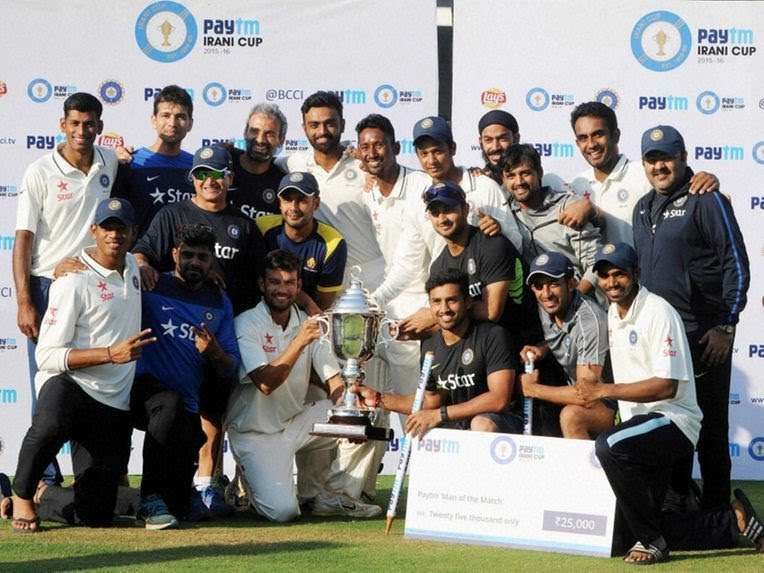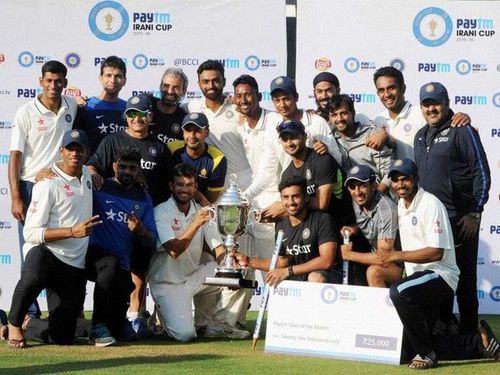
Should overseas players be allowed in Indian domestic cricket?
Rest of India registered a historic win over the 2015/16 Ranji champions Mumbai by overcoming a mammoth target of 480 to capture the Irani Cup. One would expect such a win to set the social media abuzz and some attention from the general masses.
But just like the 41st victorious campaign of Mumbai in the Ranji Trophy, this win is largely expected to go unnoticed. The administrators have made numerous attempts at invigorating the Indian domestic structure, but only with limited success.
Lessons from the IPL
But, there is one experiment that did become a runaway success story, namely the Indian Premier League (IPL). Although it has been argued throughout its short history of 8 years that it is all due to the “glamour quotient” brought in by the involvement of Bollywood, or the fact that it has posed a serious threat to Test Cricket and made the players more focused towards honing their shorter format skills to earn more money and reducing a youngster’s desire to represent his country at the highest level and thus developing his craft to perfection.
The jury is still out on the viability of all these claims. But one thing that has been generally agreed upon is that the standard of cricket experienced in the IPL is a far cry from the rest of the Indian domestic schedule. Involvement of top-quality players in the IPL is the primary reason for this disparity.
Moreover, the manner in which the IPL has been able to integrate the Indian Cricket with the rest of the World Cricket is truly commendable. The young Indian players who aspire to represent their country in the future have grabbed the opportunity of making the best of the experiences shared by their teammates who have already excelled at their craft at the international level with both hands.
The recent success of Jasprit Bumrah is a wonderful example of this, where he got an opportunity to share a dressing room with the best death bowler in World Cricket, Lasith Malinga and now, Bumrah seems to be the answer, at least for the upcoming ICC World T20, to India’s death bowling woes. Here is my suggestion, drawing from the experiences of the IPL: Allow overseas players to play in all Indian domestic competitions.
More competition ensures better results
In 1991, when the major economic reforms (Liberalisation-Privatisation-Globalisation) were undertaken, the entry of foreign companies was fiercely opposed by the local businesses due to the fears that it would adversely affect them. But, ultimately, the Indian economy gained as a whole from these measures.
Increased competition meant an opportunity for the local businesses to step up to the challenge and raise their quality, providing more and more options to the consumers. The entry of overseas players could raise fears among the youngsters regarding their place in the side.
But as the subject of economics has taught us, more competition ensures better overall results. The increased competition for the place in the playing XI will give an opportunity to the youngsters to raise their standards. The result would be an overall improvement in the quality of cricket played which would be more beneficial for Indian cricket in the long term.
As pointed out earlier, entry of overseas players also provides an opportunity for the young Indian players to share a dressing room with seasoned campaigners. The overseas players can act as mentors who could guide young players as they vie for an opportunity to play at the highest level.
More interest from the general public
It is unfortunate to see the empty stadiums even in big games like the Ranji Trophy knockouts or the Irani Cup. Better quality of cricket, gradually caused by the entry of overseas players, could translate into more interest from the general audience. Although this move cannot be expected to pull in huge crowds in the short term, but in the long term, the better quality of cricket will definitely attract the cricket-lovers.
Widening disparity between teams
One point which could go against this suggestion is that there is already a huge disparity between different state associations, which gets reflected in the results on the field. Entry of overseas players into the Indian domestic structure will most probably result in a scenario where the financially stronger teams will be able to rope in better players, thus further widening the gap between the teams.
Conclusion
The policy of globalisation proved beneficial for the Indian economy. The cricketing version of globalisation has already proved a success in the IPL as well as the County cricket in England, both of which can be used as a template to implement this idea. Indian domestic structure, outside of IPL needs reforms and the entry of overseas players could be one of the many moves that may invigorate it.

